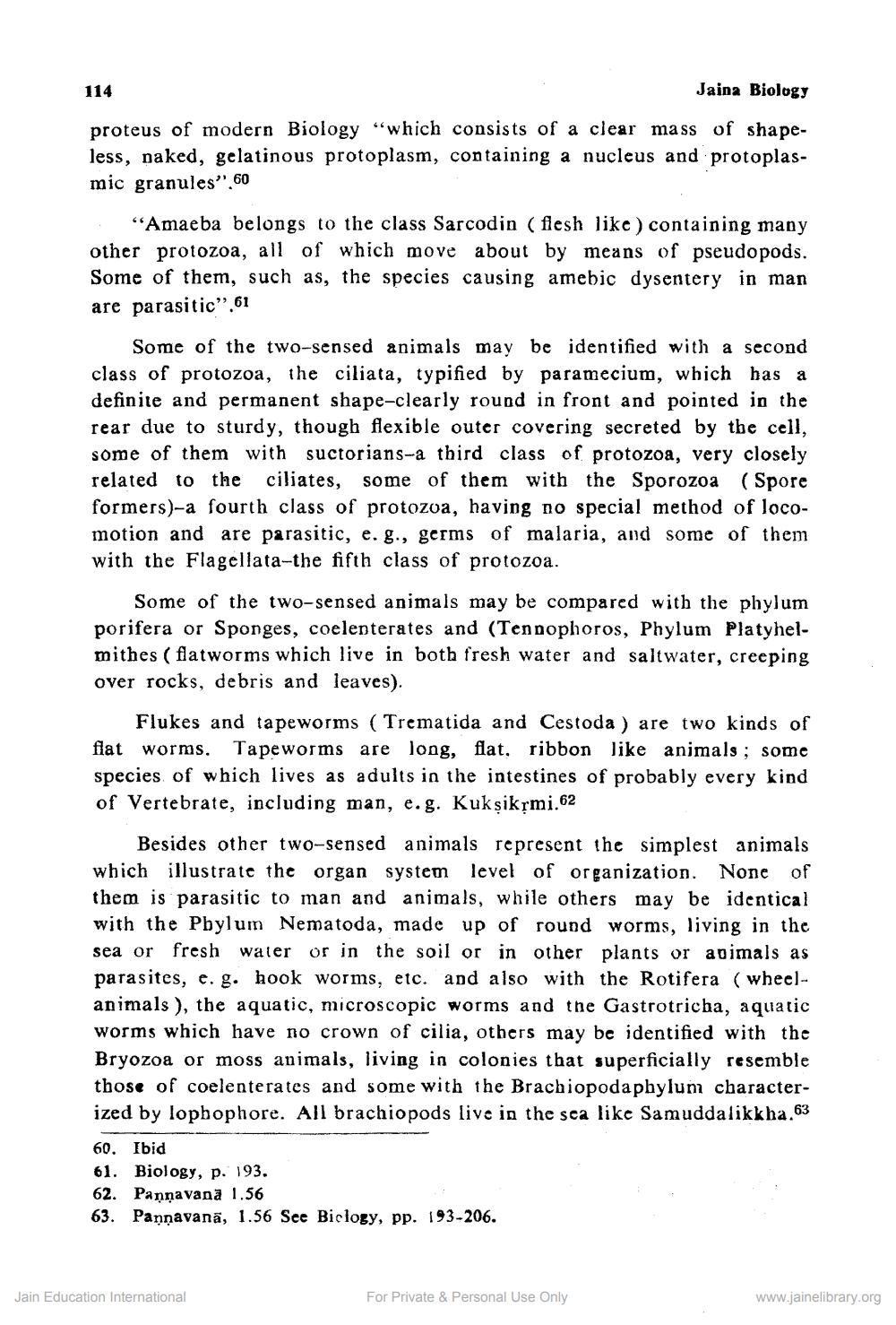________________
Jaina Biology
proteus of modern Biology "which consists of a clear mass of shapeless, naked, gelatinous protoplasm, containing a nucleus and protoplasmic granules".60
114
"Amaeba belongs to the class Sarcodin (flesh like) containing many other protozoa, all of which move about by means of pseudopods. Some of them, such as, the species causing amebic dysentery in man are parasitic",61
Some of the two-sensed animals may be identified with a second class of protozoa, the ciliata, typified by paramecium, which has a definite and permanent shape-clearly round in front and pointed in the rear due to sturdy, though flexible outer covering secreted by the cell, some of them with suctorians-a third class of protozoa, very closely related to the ciliates, some of them with the Sporozoa (Spore formers)-a fourth class of protozoa, having no special method of locomotion and are parasitic, e. g., germs of malaria, and some of them with the Flagellata-the fifth class of protozoa.
Some of the two-sensed animals may be compared with the phylum porifera or Sponges, coelenterates and (Tennophoros, Phylum Platyhelmithes (flatworms which live in both fresh water and saltwater, creeping over rocks, debris and leaves).
Flukes and tapeworms (Trematida and Cestoda) are two kinds of flat worms. Tapeworms are long, flat, ribbon like animals; some species of which lives as adults in the intestines of probably every kind of Vertebrate, including man, e.g. Kukşikṛmi.62
Besides other two-sensed animals represent the simplest animals which illustrate the organ system level of organization. None of them is parasitic to man and animals, while others may be identical with the Phylum Nematoda, made up of round worms, living in the sea or fresh water or in the soil or in other plants or animals as parasites, e. g. hook worms, etc. and also with the Rotifera (wheelanimals), the aquatic, microscopic worms and the Gastrotricha, aquatic worms which have no crown of cilia, others may be identified with the Bryozoa or moss animals, living in colonies that superficially resemble those of coelente rates and some with the Brachiopodaphylum characterized by lophophore. All brachiopods live in the sea like Samuddalikkha.63
60. Ibid
61. Biology, p. 193.
62. Pannavana 1.56
63. Paņṇavana, 1.56 See Biology, pp. 193-206.
Jain Education International
For Private & Personal Use Only
www.jainelibrary.org




